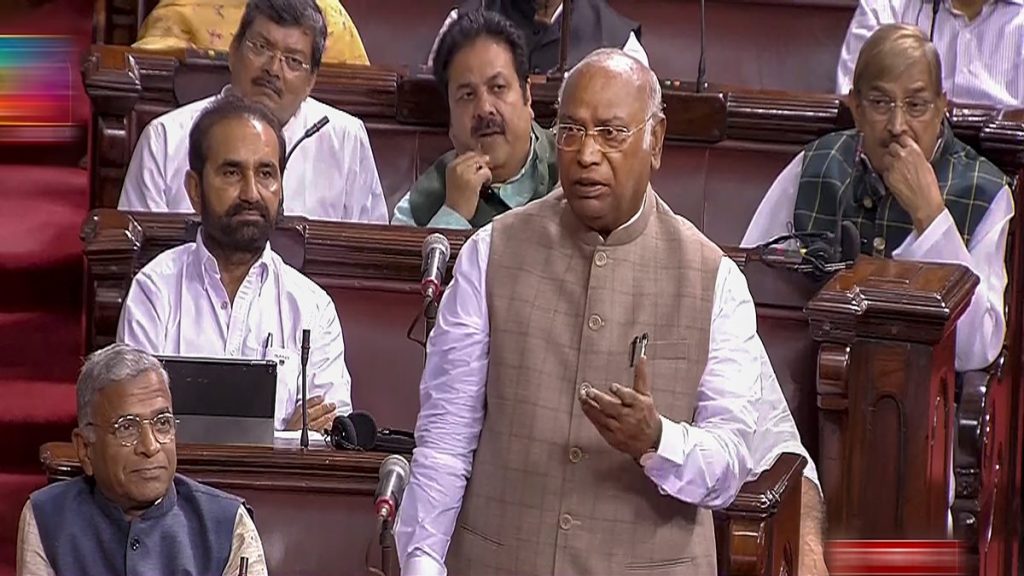Congress president and Leader of Opposition in the Rajya Sabha Mallikarjun Kharge, in a Twitter post, claimed that his mic was turned off while speaking in the House on Tuesday, which was seconded by several Opposition leaders.
He wrote, sharing a clip from his speech, “It was a breach of my privilege. This is my insult. My self-respect has been challenged. If the House is run on the instructions of the government, I understand that it is not a democracy.”
Prior to Kharge, Congress leader Rahul Gandhi also raised the issue of mics being turned off during proceedings in the Parliament. He had spoken about it in March this year at the British House of Parliament, where he alleged that functioning microphones of Opposition leaders in the Lok Sabha were often silenced.
On March 17, Congress alleged that the microphones of the Lok Sabha were muted for 20 minutes. This was at the time when Opposition members were demanding a Joint Parliamentary Committee (JPC) probe into the Adani-Hindenburg Research controversy. Amid din, the House was adjourned within 21 minutes of commencing.
The Bharatiya Janata Party (BJP) had targeted him during the Budget Session of the Parliament saying that he was raising these issues in a foreign land.
This brings us to the question of who has the control of mics in the Parliament?
Each MP is provided with an individual microphone and switch set at their specific desks, with each of these desks numbered based on division and the designated seat numbers of members, a manual put out by Lok Sabha Secretariat in May 2014 read, reports The Indian Express.
The switchboard contains switches of different colours. The grey switch is pressed for a request to speak. When a member wants to speak, the person needs to raise their hand to indicate to the Speaker, while pressing the grey button.
The microphones on the desks, with an LED, light up red when the mic is activated.
The mic is “activated from the control room only when the member has been permitted by the Speaker to speak”, the manual notes. This is indicated in two ways: with the LED ring going red and the LED on top of the microphone also going red.
Meanwhile, when Kharge said that it was a “breach of privilege”, the question arises if that was so.
The powers, privileges and immunities of both the Houses of Parliament and of its members and committees are laid down in Article 105 of the Constitution. Article 194 deals with the powers, privileges and immunities of the State legislatures, their members and their committees.
The powers and the privileges of the parliamentarians and the legislators are, however, not codified. Therefore, there are no clear notified rules as to what constitutes a “breach of privilege”.

